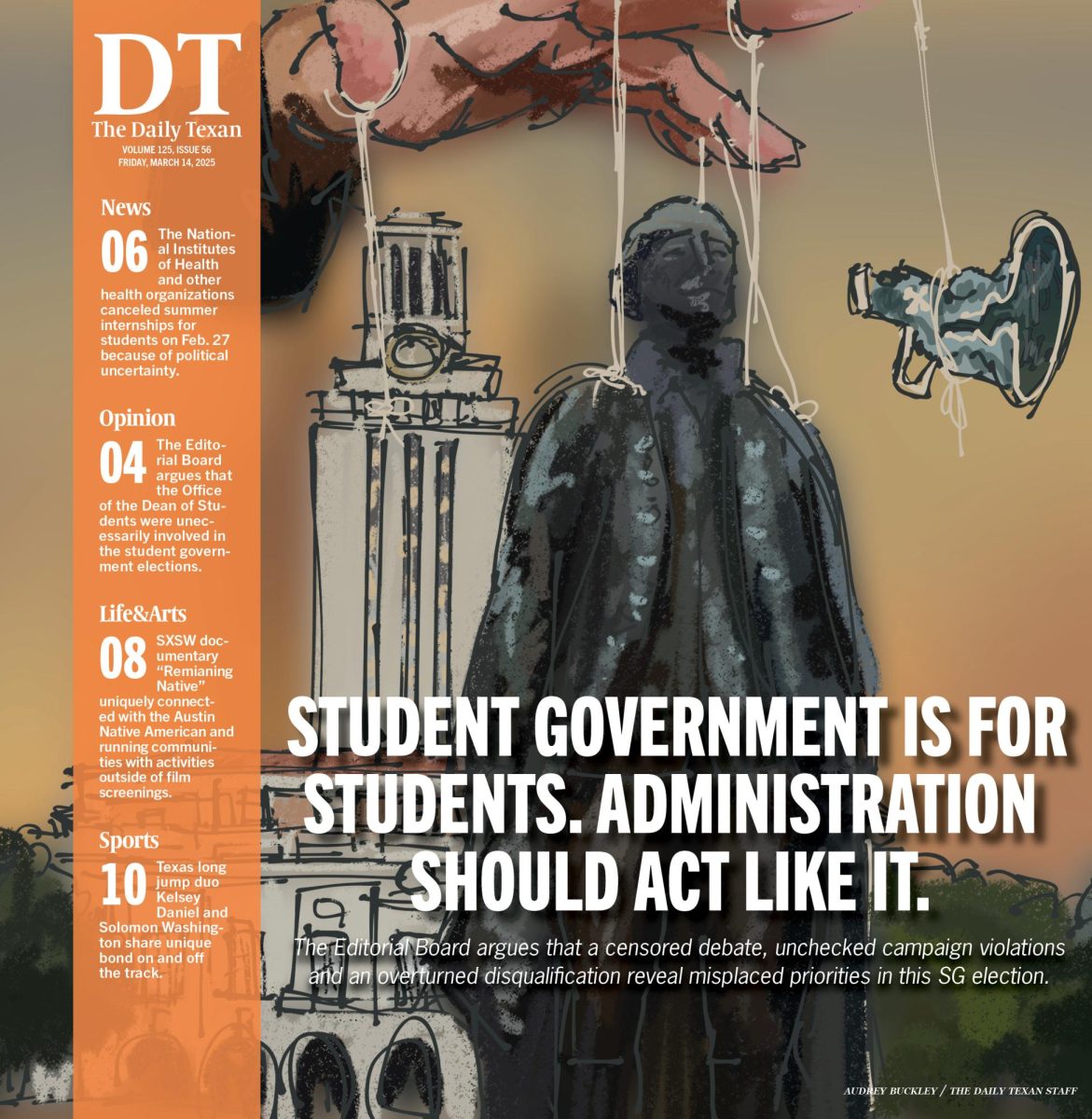Let students know which classes are expensive
May 6, 2021
Students understand classes can bear additional costs, may it be textbooks, supplies or iClickers. But to many, there is a limit on what is financially feasible. The problem is that most students won’t know what these costs are until far after the registration period.
The University needs to warn students about classes that come with high additional costs. During registration, the class descriptions on the course schedule should come with a warning that alerts students of expensive supplemental costs.
“The University can do a much better job at warning students of how much a cost is, or whether or not that cost is large,” said Riya Butani, advertising and studio art junior. “A lot of my (art classes) are infamous for not being upfront about the amount of money a student needs to spend.”
Other students shared similar sentiments.
Advertising and studio art junior Isabella Hollis said she didn’t realize that many of her classes came with extra fees for materials that weren’t supplied. Consequently, she had to reorganize her courses to focus on photography rather than painting because it was less expensive.
And these hidden costs aren’t just an issue in the College of Fine Arts. Across all colleges, there are always courses with expensive textbooks or supplies that go well into hundreds of dollars.
Of course, some classes are required, and the cost of them is just a reality we have to face. But there are just as many, if not more, optional elective courses that fit in our degree plans yet bear these additional high costs.
The fix is simple: The University just needs to denote which classes are high-cost during course registration.
“Before registering for class, students should check with their academic advisor,” Kathleen Harrison, communications manager for the Office of the Executive Vice President and Provost, said in an email. “Academic advisors can assist with the registration process and inform students on what additional costs might be connected with a class.”
While it is true that students should meet with their academic advisers before registration, our advisers can’t reasonably be expected to know the costs for all the classes we are interested in. Furthermore, incoming freshmen to the University don’t have the same opportunities to meet with their advisers individually and talk about these concerns.
Students and faculty may be aware of the online database that lists the syllabi for previous semesters. While this is a source for students to learn about additional costs prior to registration, personally finding out whether or not a class is expensive shouldn’t be something students have to stress about, nor a responsibility they should have to bear. The University should provide that service instead.
There is precedent for this. Before course schedules are released, the University of Kansas goes through all their classes and marks the ones that are affordable, which are courses that have additional costs of no more than $45. UT can do something similar, except mark the courses that are high-cost.
Butani believes any additional costs above a couple hundred dollars is unreasonable and should be warned to the students. Similarly, Rishabh Bhatnagar, an electrical and computer engineering senior, says that courses with costs around $100 should be flagged as high-cost.
The students want this — they need this. The Senate of College Councils has even begun writing legislation over this issue and has advocated for similar solutions.
Ultimately, the University needs to recognize that this is an issue. But more importantly, they need to help fix it.
Ning is an electrical engineering and history senior from Katy, Texas.
Editor’s note: Hollis was formerly on staff at The Daily Texan.












